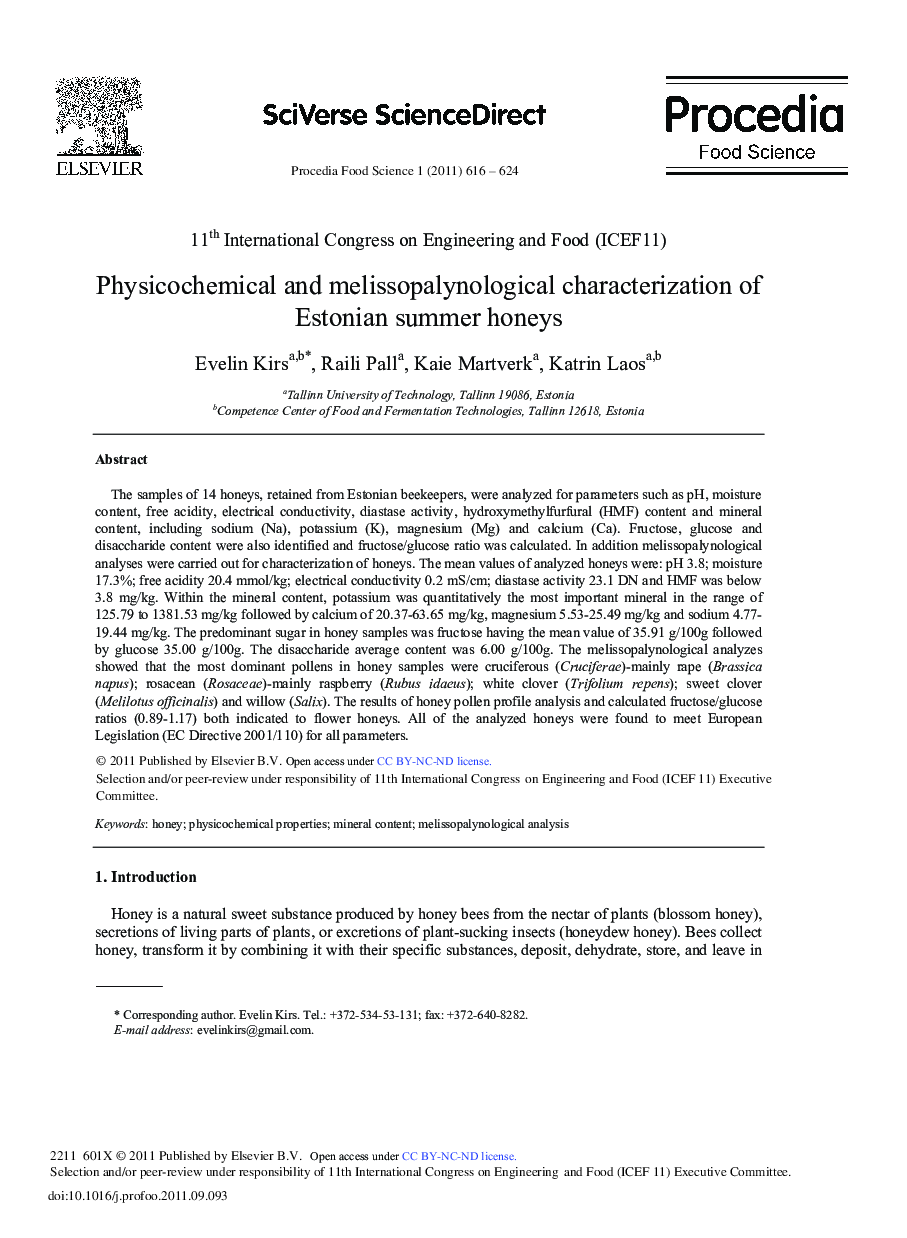| Article ID | Journal | Published Year | Pages | File Type |
|---|---|---|---|---|
| 1265001 | Procedia Food Science | 2011 | 9 Pages |
The samples of 14 honeys, retained from Estonian beekeepers, were analyzed for parameters such as pH, moisture content, free acidity, electrical conductivity, diastase activity, hydroxymethylfurfural (HMF) content and mineral content, including sodium (Na), potassium (K), magnesium (Mg) and calcium (Ca). Fructose, glucose and disaccharide content were also identified and fructose/glucose ratio was calculated. In addition melissopalynological analyses were carried out for characterization of honeys. The mean values of analyzed honeys were: pH 3.8; moisture 17.3%; free acidity 20.4 mmol/kg; electrical conductivity 0.2 mS/cm; diastase activity 23.1 DN and HMF was below 3.8 mg/kg. Within the mineral content, potassium was quantitatively the most important mineral in the range of 125.79 to 1381.53 mg/kg followed by calcium of 20.37-63.65 mg/kg, magnesium 5.53-25.49 mg/kg and sodium 4.77- 19.44 mg/kg. The predominant sugar in honey samples was fructose having the mean value of 35.91 g/100 g followed by glucose 35.00 g/100 g. The disaccharide average content was 6.00 g/100 g. The melissopalynological analyzes showed that the most dominant pollens in honey samples were cruciferous (Cruciferae)-mainly rape (Brassica napus); rosacean (Rosaceae)-mainly raspberry (Rubus idaeus); white clover (Trifolium repens); sweet clover (Melilotus officinalis) and willow (Salix). The results of honey pollen profile analysis and calculated fructose/glucose ratios (0.89-1.17) both indicated to flower honeys. All of the analyzed honeys were found to meet European Legislation (EC Directive 2001/110) for all parameters.
